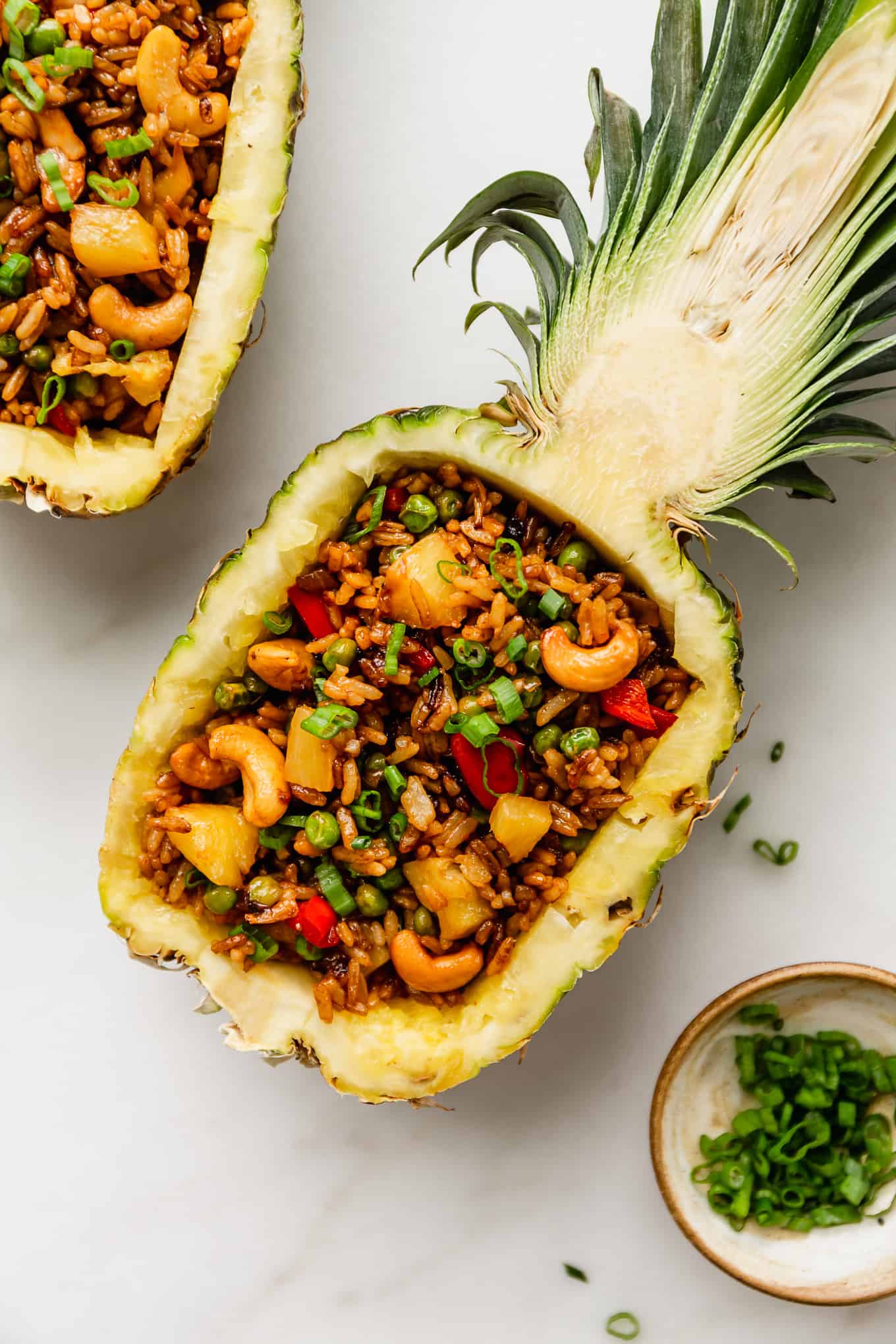
Thai Fried Rice: A Culinary Symphony of Flavors and Textures
Thai fried rice, known as "Khao Pad" in Thai, is a beloved dish that has captivated taste buds worldwide. Its vibrant colors, aromatic blend of spices, and irresistible combination of textures make it a culinary masterpiece. This comprehensive article delves into the intricacies of Thai fried rice, exploring its history, variations, ingredients, and the step-by-step process of creating this tantalizing dish.
Historical Roots and Cultural Significance
The origins of Thai fried rice can be traced back to the 14th century, during the Ayutthaya Kingdom. It is believed to have evolved from Chinese immigrants who introduced their stir-frying techniques to Thailand. Over the centuries, Thai fried rice has become an integral part of Thai cuisine, enjoyed as a street food, a home-cooked meal, and a staple in restaurants.
Variations and Regional Adaptations
Thai fried rice is not a monolithic dish but rather a canvas for culinary creativity. Regional variations and personal preferences have given rise to a wide array of flavors and ingredients. Some of the most popular variations include:
- Khao Pad Sapparot (Pineapple Fried Rice): A sweet and tangy version with pineapple chunks, tomatoes, and cashews.
- Khao Pad Tom Yum (Tom Yum Fried Rice): A spicy and flavorful rendition infused with the aromatic flavors of Tom Yum soup.
- Khao Pad Pu (Crab Fried Rice): A luxurious version featuring succulent crab meat, often combined with eggs and vegetables.
- Khao Pad Neua (Beef Fried Rice): A savory and hearty version with tender beef slices, onions, and bell peppers.
- Khao Pad Kai (Chicken Fried Rice): A classic version with shredded chicken, eggs, and a medley of vegetables.
Essential Ingredients and Their Roles
The symphony of flavors in Thai fried rice stems from a carefully curated blend of ingredients. Each component plays a crucial role in creating the dish’s distinctive character:
- Jasmine Rice: The foundation of Thai fried rice, jasmine rice is known for its delicate aroma and fluffy texture.
- Protein: Typically chicken, beef, pork, or shrimp, protein provides a savory and substantial base.
- Eggs: Eggs add richness, texture, and a golden hue to the dish.
- Vegetables: A vibrant array of vegetables, such as onions, carrots, bell peppers, and green beans, contribute color, crunch, and nutritional value.
- Sauce: A blend of soy sauce, fish sauce, oyster sauce, and other seasonings creates the savory and umami-rich base flavor.
- Spices: A symphony of spices, including garlic, ginger, chili peppers, and turmeric, adds depth and warmth to the dish.
Step-by-Step Guide to Creating Thai Fried Rice
Creating Thai fried rice is a culinary adventure that can be enjoyed by home cooks of all skill levels. Follow these steps to craft a delectable and authentic dish:
- Prepare the Ingredients: Chop the vegetables, slice the protein, and whisk the sauce ingredients together.
- Cook the Rice: Rinse the jasmine rice and cook it according to the package instructions. Allow it to cool slightly before frying.
- Heat the Wok or Pan: Heat a wok or large skillet over high heat. Add a drizzle of oil and swirl to coat the surface.
- Stir-Fry the Protein: Add the protein to the hot wok and stir-fry until cooked through. Remove from the wok and set aside.
- Stir-Fry the Vegetables: Add the vegetables to the wok and stir-fry until tender-crisp.
- Add the Rice: Spread the cooked rice evenly over the vegetables. Use a spatula to break up any clumps.
- Add the Sauce: Pour the prepared sauce over the rice and stir-fry to combine.
- Return the Protein: Add the cooked protein back to the wok and stir-fry to heat through.
- Add the Eggs: Push the rice and vegetables to the sides of the wok. Crack the eggs into the center and scramble them until cooked.
- Combine and Season: Mix the eggs, rice, and vegetables together. Season with additional soy sauce or fish sauce to taste.
- Garnish and Serve: Transfer the fried rice to a serving dish and garnish with fresh cilantro, lime wedges, and chili peppers.
Tips for Enhancing Flavor and Texture
- Use Day-Old Rice: Day-old rice has less moisture, resulting in a fluffier and less sticky fried rice.
- Heat the Wok or Pan Thoroughly: A hot cooking surface ensures even cooking and prevents the rice from sticking.
- Stir-Fry in Batches: If cooking a large amount of rice, stir-fry in batches to avoid overcrowding the wok and ensure even cooking.
- Use a Wok Spatula: A wok spatula with a curved edge is ideal for flipping and stirring the rice without breaking it.
- Don’t Overcook the Rice: Overcooked rice will become mushy and lose its texture.
- Adjust Seasonings to Taste: Thai fried rice should be flavorful but not overpowering. Adjust the seasonings to your personal preference.
Conclusion
Thai fried rice is a culinary masterpiece that embodies the vibrant flavors and textures of Thai cuisine. Its versatility, ease of preparation, and endless variations make it a beloved dish enjoyed around the world. Whether you’re a seasoned cook or a culinary novice, this comprehensive guide will empower you to create an authentic and delectable Thai fried rice that will tantalize your taste buds and leave you craving more. So gather your ingredients, heat up your wok, and embark on a culinary adventure that will transport you to the vibrant streets of Thailand.















